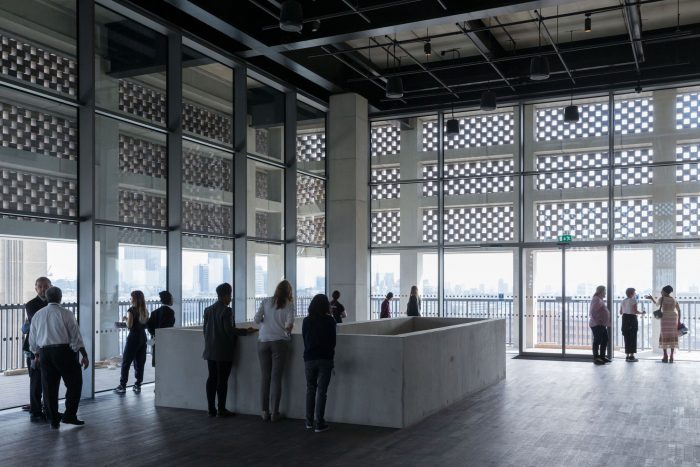Tate Modern Switch House
Tate modern, the cultural focus of London is receiving a new 10 storey high addition designed by architects Herzog and de Meuron.
“Tate Modern changed London when it first opened in 2000. Herzog & de Meuron transformed the derelict Bankside Power Station into a home for the UK’s collection of international modern and contemporary art, sparking local regeneration and creating a new landmark on the Thames. The power station’s original Boiler House was converted into galleries, learning studios and social spaces, while its Turbine Hall was turned into a huge open space for special commissions and events. Tate Modern quickly became the world’s most popular museum of modern art, attracting around 5 million visitors each year – more than double the number for which it was designed – while its collection grew to encompass a huge variety of art from around the world,” says the architect.
South of the Turbine Hall, where the power house’s Switch House used to be, will now stand this new building. The building will be rooted in underground cylindrical tanks measuring 30 meters across. The tanks are all set to be the world’s first museum space for live art, installation and film. These are the foundation for a new museum physically as well as conceptually.
“Above them are three additional floors of world-class galleries with a wide palette of volumes, from intimate small-scale environments to dramatic top-lit spaces. They are complemented by extensive areas dedicated to learning and interpretation, as well as a new restaurant, bar and Members Room, topped with a public terrace offering 360-degree panoramic views of London. A new bridge across the Turbine Hall joins the existing Boiler House galleries on Level 4 to the new Switch House galleries, uniting both sides with the Turbine Hall at its heart.”
The Tate Modern Switch House is a beautiful manifestation of concrete cast as what can be called a modern take on a Pyramid; it seems to fold angularly, going out on an edge. Adding character to this volume is its texture formed by a perforated lattice of 336,000 bricks. What it doesn’t give away from the outside is that the lattice lets in filtered light during the day, and at night it lets light out, causing the structure to glow. Slit windows run along horizontal bands in the facade, breaking the lattice in places and framing views for people within. Emulating the windows on the Boiler House are thin vertical strip windows. “The resulting exterior creates both an iconic addition to the skyline and a unified Tate Modern. It also puts environmental sustainability at the heart of its design, with a high thermal mass, natural ventilation, solar panels and new green spaces. Two new public squares are being developed around the site, while the footprint of the Tanks is echoed in a large terrace opening out from the new southern entrance.”
The original design team for Tate Modern-Herzog de Meuron, Vogt Landscape Architects and designer Jasper Morrison- came together again for this new building . Jasper Morrison’s specially designed furniture will grace the interior spaces; the designs will reflect the architecture around from the galleries and concourses to the restaurants and bars.
Project Information :
Architect : Herzog and de Meuron
Location : Tate Modern, London SE1, United Kingdom
Project Year : 2016
By: Sahiba Gulati













